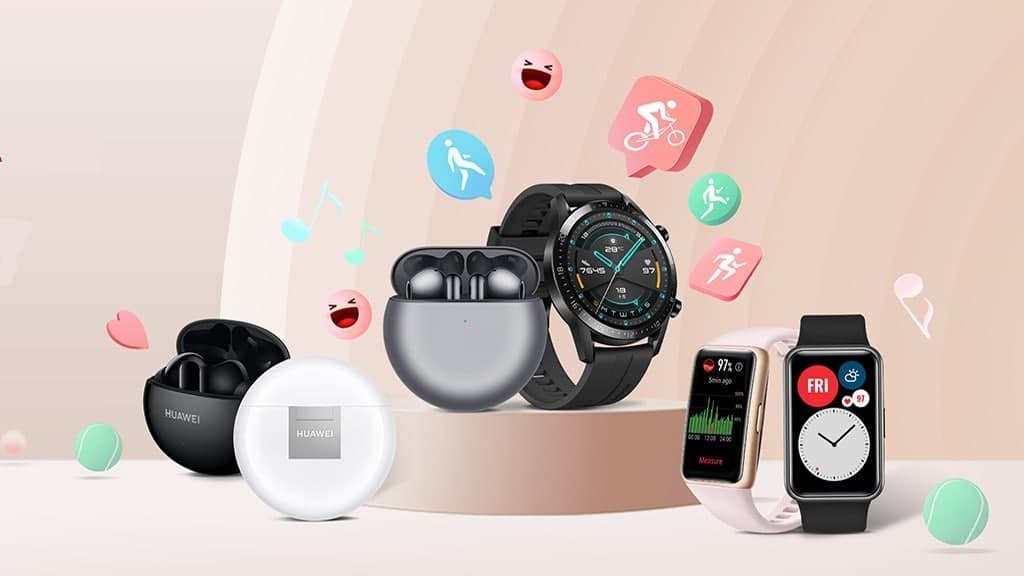
Overall, Huawei holds comparatively high market shares within the context of the international wearable market share and occupies 15% of wearable market share in Q2 2024. This accomplishment is not due to the company’s great marketing strategy or expansion to new markets but is an embodiment of Huawei’s strategic adaptations and an appreciation of customer needs. Let us look at four major components that have seen Huawei excel and branch themselves from the rest of the pack.
1. Prioritizing Innovation with User Experience
Huawei strategy on the wearables is to offer the best technology while at the same time offering the best experience to the user. Their watch; Huawei Watch GT series combines extended on-the-device battery longevity, precise health tracking features, and aesthetic appeal which make them favorite among consumers. With features such as AI-powered health tracker and sleep tracker, Huawei makes sure that their bands address the needs of today’s health-oriented consumer.
The company does not only care for the features it provides, but it also cares for innovation in general. According to the company’s Intelligent World 2030 plan, it seeks to take the wearables market into the future. More importantly, this strategic vision and plan is forward looking with emphasis on Huawei’s vision of the Intelligent World 2030 which includes the significance of wearables in health, fitness and daily life (Huawei Intelligent World 2030).
2. Building an Integrated Ecosystem
This is perhaps one of the biggest strengths of Huawei’s wearable strategy, namely how seamlessly these devices fit into the broader Huawei ecosystem. HarmonyOS, Huawei’s own operating system, supports the intelligent connection between wearable devices, mobile phones, computers and tablets. Probably, that’s why it becomes easy for individuals using Apple Watch to manage different aspects of their lives digitally including their health and even tasks.
While competitors can make use of more complex, disintegrated systems that simplify the users’ experience, Huawei is a provider of a holistic system that serves as an improvement to the user’s experience. When looking at Huawei’s system level approach to updating hardware and software over time, their wearables generate value beyond a stand-alone product.
3. Affordable Yet Feature-Rich Products
Huawei’s major competitive strategy that has proved so effective is providing the extra services and features at relatively cheaper rates. Huawei has been able to sell the service to most of the market ranging from the tech-savvy, health conscious and the price sensitive market. This has been one of the key strategies used by Huawei to target consumer skeptics who are always chasing after an affordable price tag before making a purchase especially from emerging markets.
Meanwhile Apple is targeting the high end of the market, Huawei has successfully achieved its share of the market by incorporating both technological innovation and economical pricing. This approach has enabled the company to access consumers in different parts of the globe thus extending its networks and becoming a global leader in shipment (Gulf Tech News).
4. Internationalization and Adaptation Plan
Thus, Huawei’s global success is not only in terms of innovation and pricing strategies alone. The company’s management has been particularly keen on the globalization/ internationalization strategy where the demand for wearables continues to rise. A plausible strategy that has elevated Huawei on top is the ability to localize its products and be in a position to adapt to suit different markets’ tastes. As early as now, Huawei has been strategically distributing its wearables across Asia and the Middle East through its regional partners and channels.
Further to this, its marketing strategy has marketed Huawei as a brand of quality in the global market, making it compete with other players at equal league in every region it ventures into. It provides Huawei with more opportunities than threats because despite it being a global company, it targets specific markets in the global community, opportunities which other giants in the industry have been sparing in, due to regional market domination by local players (Technium Science).
5. Health-Focused Technology
Over recent years, there was a definite inclination toward health-oriented technologies, and Huawei has an opportunity to follow that trend. Huawei wearables can have diverse health monitoring features which include heart rate monitoring, blood oxygen level measurement, sleep analysis and so on and therefore targets the increasing customer base in the section of personal health.
To be more precise, Huawei’s wearables are not only ordinary fitness trackers; they are health management systems. Thus, together with artificial intelligence, Huawei offers its clients health suggestions and encourages them to lead a healthy life. This is in contrast to the other wearable brands that barely provide as much detail when it comes to health monitoring as featured by Huawei.
Conclusion
Thus, the Huawei company’s leadership in the worldwide wearable market share proves its capacity to invent, assimilate, and meet consumer demands. Huawei has been successful in this business because they offer high end products with sufficient features at relatively cheaper rates than other competitors in the market. These are complemented and enhanced by the harmonyOS ecosystem and the emphasis on health technology to strengthen its leadership position.
Huawei’s strategic vision and focus on innovation for customers will very probably keep the company as one of the leading players on the wearable market. Huawei is, therefore, revolutionizing wearable technology either by producing innovative technologies, affordable Wearable tech devices, or by integrating the company in the wearable tech ecosystem.
Discover the New Articles and Updates
Learn more about what is happening in various fields by visiting New York Central Post, a blog where you will find articles on the most relevant topics.






